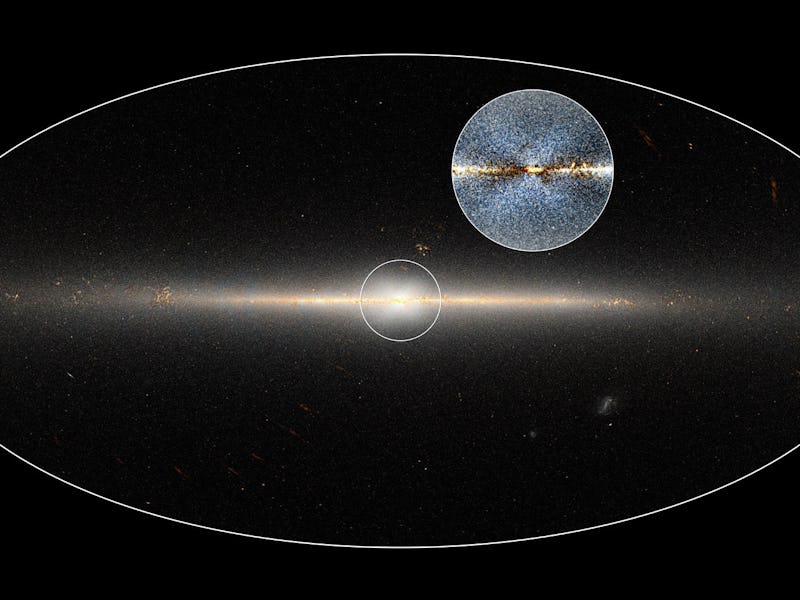The Milky Way Has a Big X on It
Astronomers determine there's a giant stream of stars orbiting the galaxy in an X-like formation.

Twitter is a wonderful place to learn about the world, but did you know it’s also an avenue for conducting scientific research? The good people at NASA have already figured that out. New findings published in The Astronomical Journal illustrate how scientists used Twitter as a platform for studying a strange region of stars in the Milky Way galaxy, and confirming that this central bulge of stellar energy forms an “X” shape. The results help fold into our understanding of the birth and evolution of the Milky Way.
“The bulge is a key signature of formation of the Milky Way,” said Melissa Ness, the study’s lead author, in a news release. “If we understand the bulge we will understand the key processes that have formed and shaped our galaxy.”
The research began when Dustin Lang, an astronomer at the University of Toronto, decided to post a series of galaxy maps on his Twitter account. Those maps were derived from data gathered by NASA’s Wide-field Infrared Survey Explorer (WISE), which is tasked with surveying the sky for celestial objects like galaxies and asteroids. (It’s also been the subject of a recent spat between Nathan Myhrvold and NASA regarding the instrument’s accuracy.)
Anyways, Lang was using data from WISE as part of a project for mapping galaxies outside the Milky Way, when his tweets found the attention of other astronomers who noticed a peculiar bulging shape coming from the images of the night sky in infrared (which allows researchers to observe galaxies without the interference of cosmic dust). The bulge seems to depict a strange X-like structure that scientists never saw before.
Ness and her colleagues worked with Lang to finally confirm the bulge’s shape and show that the stars do indeed form in an X-shape distribution.
The Milky Way, like many other galaxies in the universe, is a disk galaxy, whereby in which stars and gas sometimes form a “stellar bar” in which objects move around in a box-shaped orbit around the center. If that bar becomes unstable and buckles, a bulge can form where stars begin to move perpendicular to the galactic plane. We know for sure that our own galaxy exhibits this perpendicular stream of stars moving in a giant X-shape relative to the center.
To reveal the X shape in the Milky Way's central bulge, researchers took WISE observations and subtracted a model of how stars would be distributed in a symmetrical bulge.
“We see the boxy shape, and the X within it, clearly in the WISE image, which demonstrates that internal formation processes have driven the bulge formation,” Ness said. “This also reinforces the idea that our galaxy has led a fairly quiet life, without major merging events since the bulge was formed, as this shape would have been disrupted if we had any major interactions with other galaxies.”
Follow-up research will further unravel the behavior and dynamics of the Milky Way bulge, helping to shed more light on what our galaxy once looked like, and what it is slowly transforming into over the next several billion years.
Maybe you’re lucky enough to take a look at the big ol’ X right now.